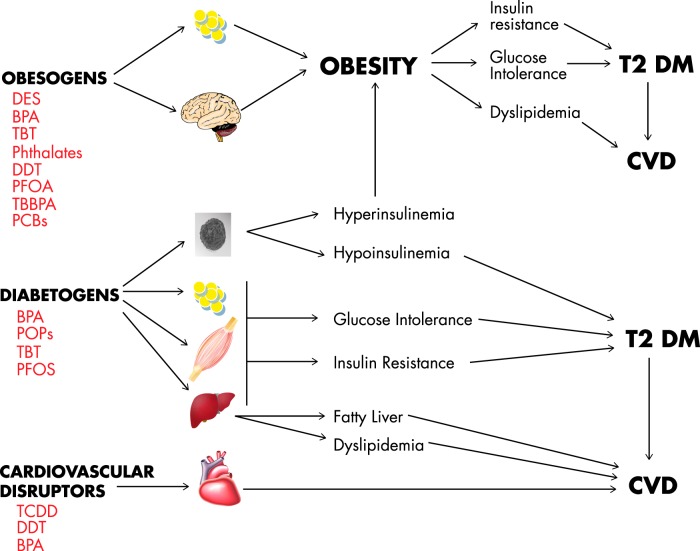Figure 3.
EDCs can act as obesogens, diabetogens, and/or cardiovascular disruptors. For obesogenic effects, EDCs act upon adipocytes and the brain to induce obesity, which generates insulin resistance, glucose intolerance, and dyslipidemia and greatly increases the susceptibility to T2D and CVDs. Additionally, EDCs work as diabetogens that directly affect the islet of Langerhans and increase or decrease normal insulin biosynthesis and release, generating hyper- or hypoglycemia. An excess of insulin signaling, as well as insulin resistance, can result in metabolic syndrome. In animal models, EDCs induce insulin resistance, glucose intolerance, fatty liver, and dyslipidemia on WAT, liver, and skeletal muscle. This generates T2D and CVDs. The EDC BPA has been shown to act directly on the heart, increasing the probability of CVDs in animal models.

